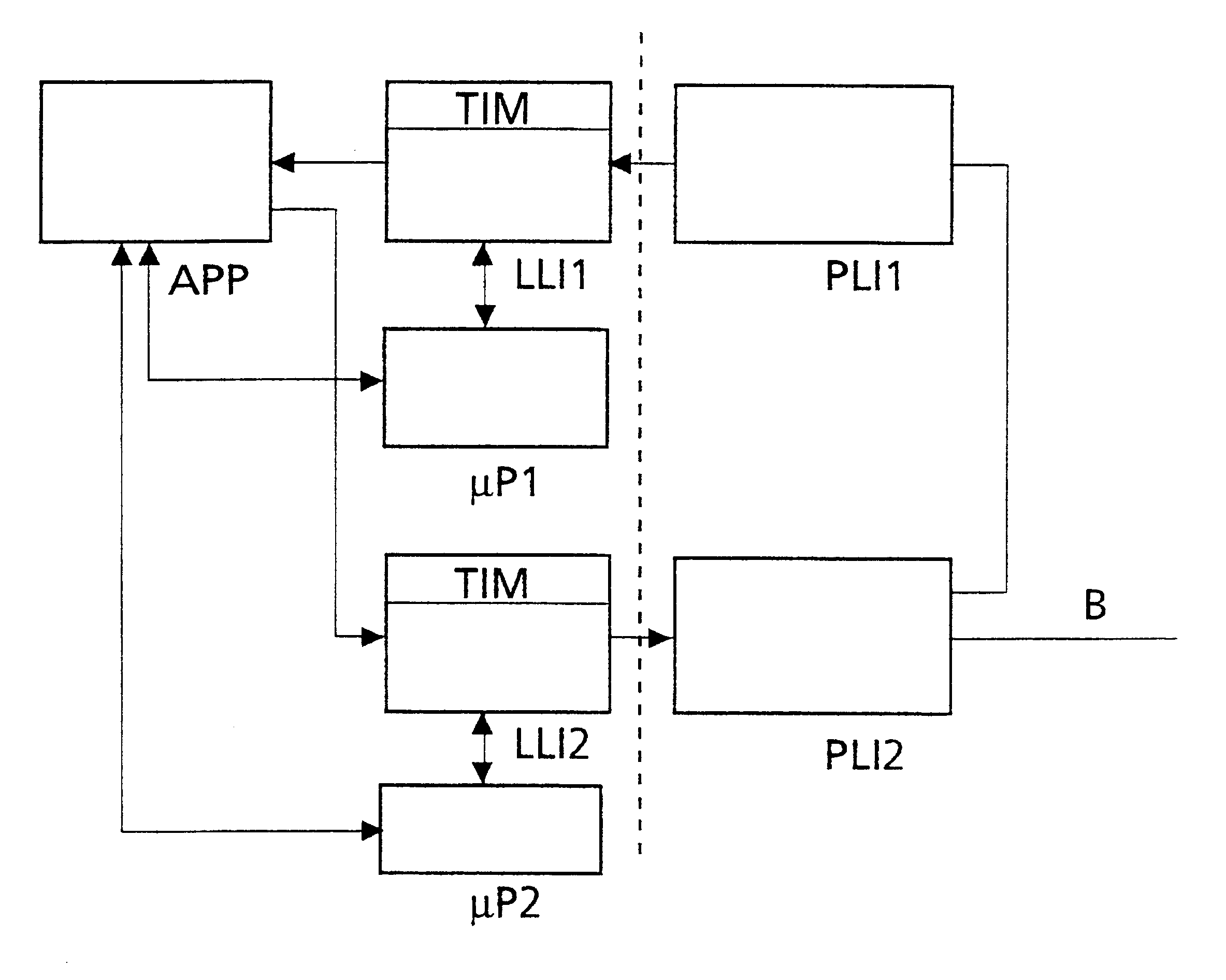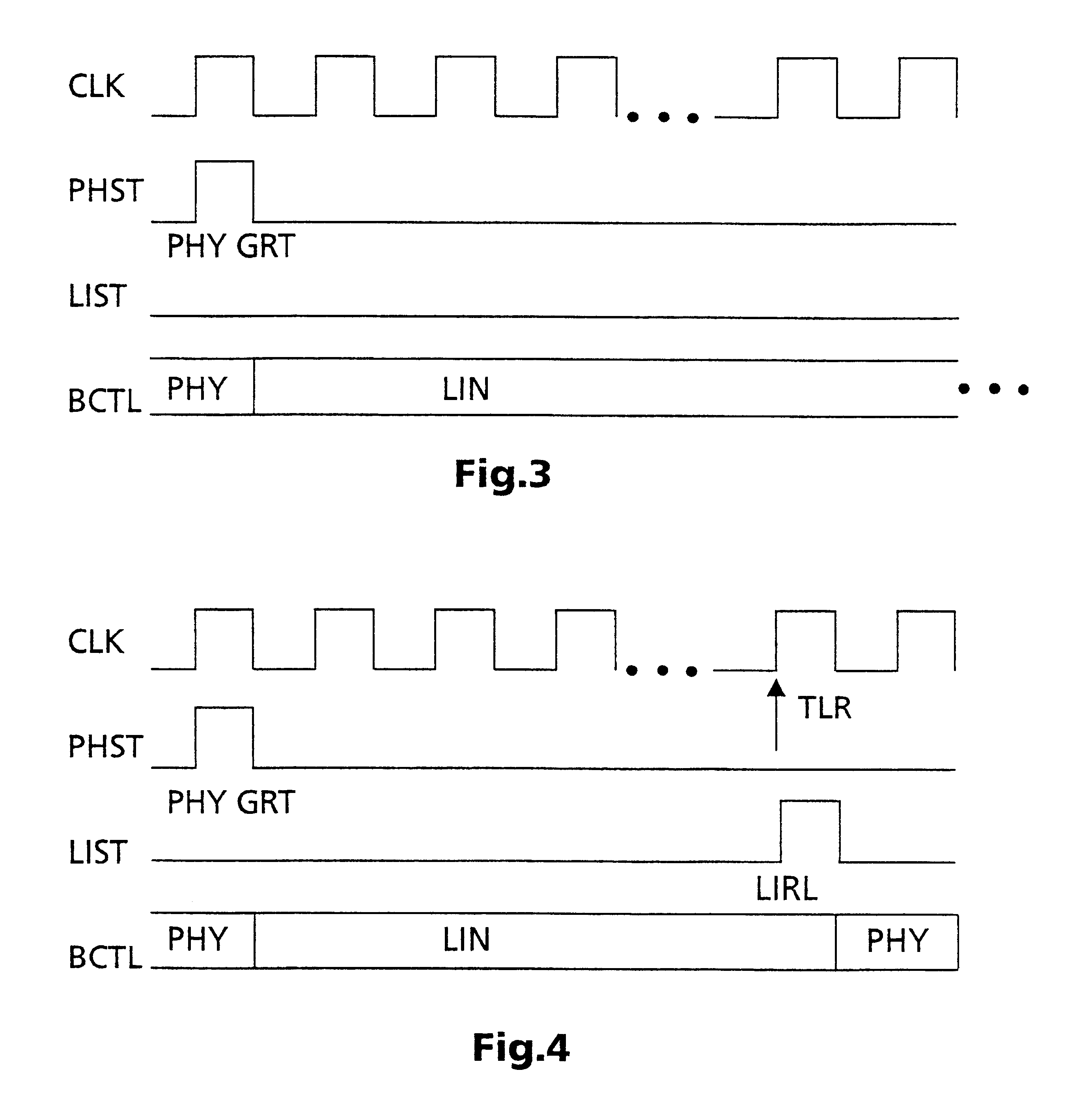Method and apparatus for releasing bus control by a device connected to the bus
a technology of bus control and bus control, which is applied in the direction of frequency-division multiplex, instruments, data switching networks, etc., can solve the problems of bus blockage for an indefinite time period, bus lock-up is very serious, and bus whole is jammed
- Summary
- Abstract
- Description
- Claims
- Application Information
AI Technical Summary
Benefits of technology
Problems solved by technology
Method used
Image
Examples
Embodiment Construction
In FIG. 1 a first physical layer IC PLI1 is connected via an IEEE1394 bus cable connection to a second physical layer IC PLI2 which itself is also connected to the further IEEE1394 bus cable B. PLI1 is at the other side assigned to a first link layer IC LLI1 for data input, and PLI2 is assigned to a second link layer IC LLI2 for data output. LLI1 and LLI2 are both assigned to the same application device APP. LLI1 and PLI1 via LLI1 are controlled by a first microcontroller .mu.P1. LLI2 and PLI2 via LLI2 are controlled by a second microcontroller .mu.P2. Application device APP can be controlled by .mu.P1 and .mu.P2, or by one of them. In both cases .mu.P1 and .mu.P2 may interact with each other (not depicted).
The invention can e.g. be used for an application as depicted in FIG. 2: A set-top box STB with receiving unit RU, MPEG decoder MDEC and IEEE1394 interface 1394S receives a digital TV program via satellite or cable. The receiving unit output signal is transmitted via IEEE1394 bus...
PUM
 Login to View More
Login to View More Abstract
Description
Claims
Application Information
 Login to View More
Login to View More - R&D
- Intellectual Property
- Life Sciences
- Materials
- Tech Scout
- Unparalleled Data Quality
- Higher Quality Content
- 60% Fewer Hallucinations
Browse by: Latest US Patents, China's latest patents, Technical Efficacy Thesaurus, Application Domain, Technology Topic, Popular Technical Reports.
© 2025 PatSnap. All rights reserved.Legal|Privacy policy|Modern Slavery Act Transparency Statement|Sitemap|About US| Contact US: help@patsnap.com



